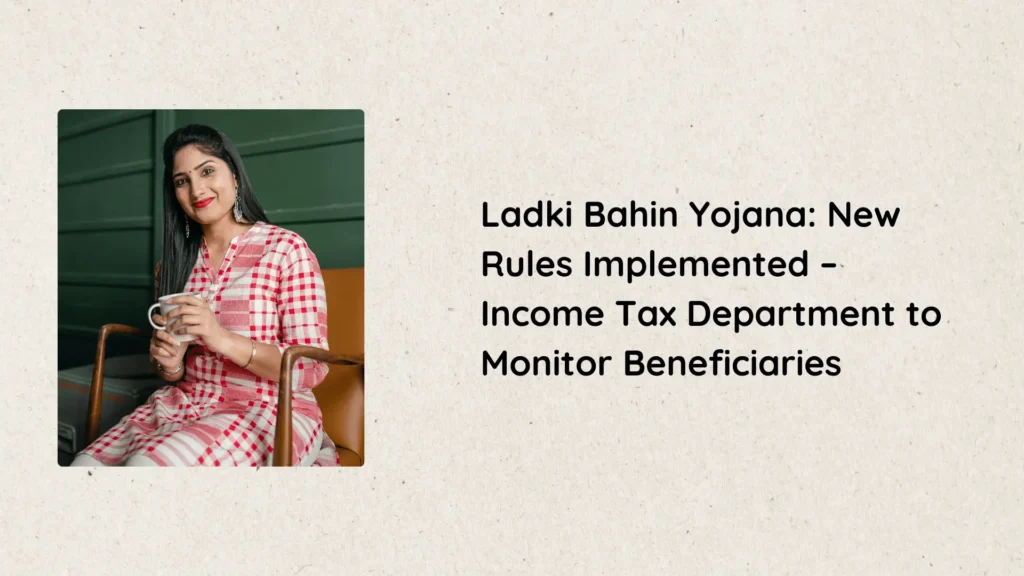The Ladki Bahin Yojana is set to undergo significant changes as the government introduces new regulations. In an effort to streamline the scheme and eliminate ineligible beneficiaries, authorities will now seek assistance from the Income Tax Department. But what exactly are these new rules, and why is the government involving tax authorities? Let’s delve into the details.

Government’s New Measures to Strengthen Ladki Bahin Yojana
With an annual budget of ₹45,000 crore, the Ladki Bahin Yojana has placed a substantial financial burden on the state government. Currently, 15% of the state’s total revenue expenditure is allocated to this scheme, affecting other developmental programs. As a result, the administration has decided to weed out fraudulent beneficiaries through a stringent verification process.
To enhance transparency and efficiency, new eligibility criteria are being introduced. Moving forward, the records of beneficiaries will be scrutinized using income tax data, ensuring that only deserving individuals receive financial aid.
Cabinet Meeting Confirms Implementation of Reforms
According to insider reports, a recent cabinet meeting finalized these modifications. Government agencies have already initiated the groundwork, and Chief Minister Devendra Fadnavis has hinted at a significant reduction in the number of beneficiaries. Speaking at a Sakal Media Group event, he estimated that the number of disqualified applicants could rise from 5 lakh to nearly 10-15 lakh as the verification process intensifies.
Key Changes in the Ladki Bahin Yojana Eligibility Criteria
The updated rules aim to ensure that only genuinely needy women benefit from the scheme. Below are the major reforms being enforced:
- Income Tax Scrutiny: Beneficiaries’ income tax records will now be verified to assess their eligibility.
- Mandatory Annual e-KYC: Every recipient must complete their e-KYC between June and July each year.
- Life Status Verification: Authorities will verify whether the beneficiary is still alive before disbursing funds.
- Income Threshold for Eligibility: Women earning more than ₹2.5 lakh annually will be deemed ineligible.
- District-Level Reassessment: A thorough re-evaluation process will be conducted at the district level, and applicants failing to meet the revised criteria will be disqualified.
These reforms signify the government’s commitment to ensuring that financial aid reaches the right beneficiaries while preventing misuse of public funds. As the new verification measures roll out, a considerable number of ineligible individuals may be excluded, ultimately strengthening the scheme’s efficiency and sustainability.